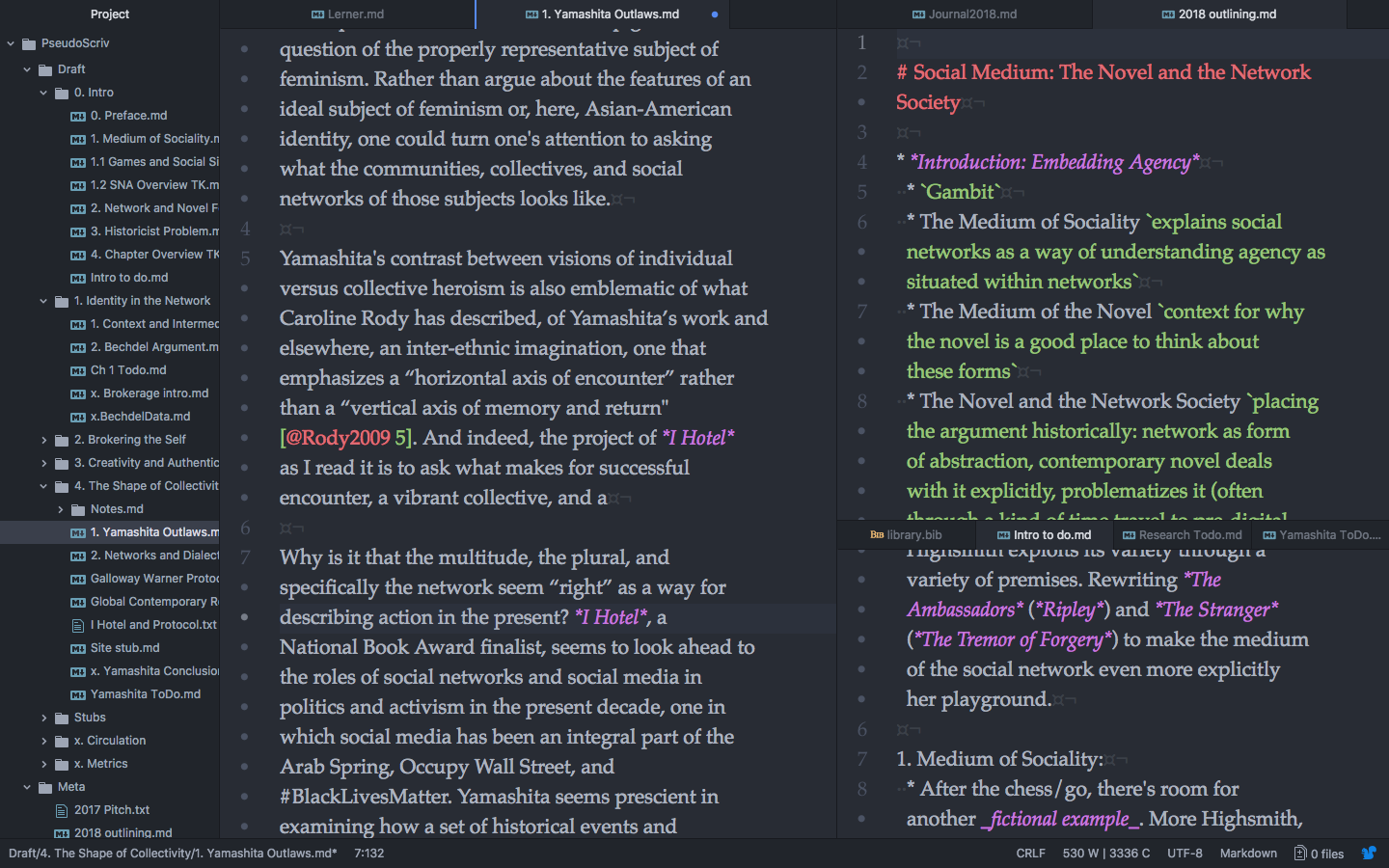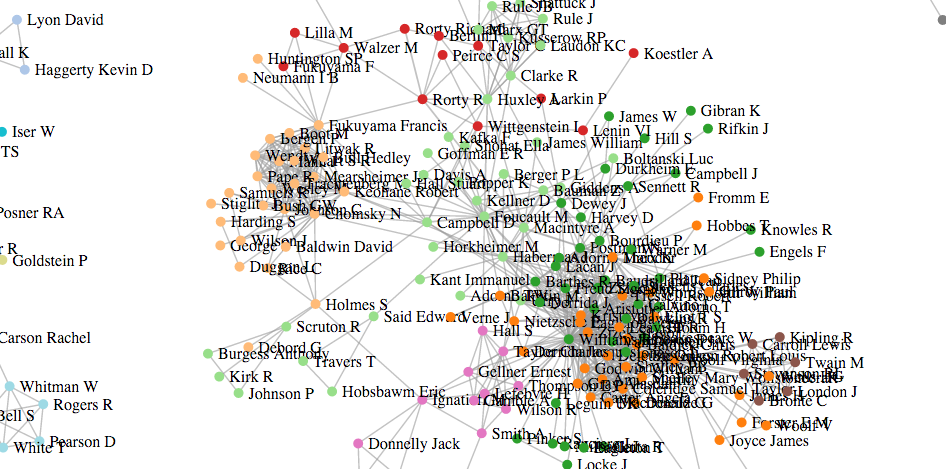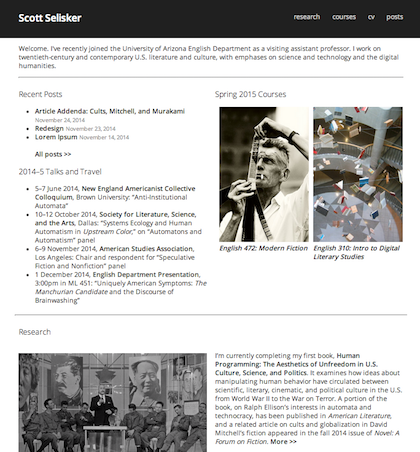Posts
-
A Plain Text Workflow for Academic Writing with Atom
Why Plain Text? I used to do my academic writing in a combination of Scrivener and Microsoft Word, but when I started a new book-length project last spring, I found I had new needs: a robust citation management system that could change citation styles easily seamless cross-platform compatibility (as an owner of both PCs and Macs) the ability to organize and manage a large, multi-file project in a multi-pane view (a signature strength of Scrivener) Neither Word nor Scrivener could do all three, and after asking for advice (references and acknowledgements below), I decided to use a new set of tools for working in plain text: Pandoc with Pandoc-Citeproc for document and bibliography conversion, Zotero with BetterBibTex for reference management, and Atom as a text editor for writing in Pandoc’s version of Markdown. More >>>
 Academic writing with Atom
Academic writing with Atom
-
Notes on Felski's The Limits of Critique
“A Short History of Modernist Painting,” Mark Tansey, 1982 A couple of interesting reviews of Rita Felski’s new book, The Limits of Critique (Chicago, 2015) have appeared (by Davide Panagia and Matthew Mullins), but neither struck at quite what made the book compelling and thought-provoking for me. In my conversations with friends and colleagues, on Twitter and at MLA, I’ve found the book to be quite controversial. I think this is so largely because, from descriptions of the book, one might imagine it to be a reactionary, anti-political retreat into aesthetic appreciation. More >>>
 'A Short History of Modernist Painting,' Mark Tansey, 1982
'A Short History of Modernist Painting,' Mark Tansey, 1982
-
Tracing 1984's Networks
Several friends and colleagues asked if I’d post my MLA 2016 talk on networks in George Orwell’s 1984, and I’m happy to oblige. It’s a sort of digital-humanities-oriented post-script to my recently completed first book, and it’s an attempt to describe how actor network theory—rather than a Foucauldian, critical paradigm—wound up informing the method for that book project. The panel, “Literary and Scientific Networks,” organized by John Savarese, also offered a good opportunity to try adapting the computationally generated co-citation networks that I’ve adapted very slightly from Neal Caren and Kieran Healy by way of Jonathan Goodwin. More >>>
 Authors who have been cited alongside 1984 in scholarly journals
Authors who have been cited alongside 1984 in scholarly journals
-
Digital Humanities Knowledge: Syllabus and Reflections
[Edit: A lightly revised version of this post has been included in the Digital Humanities and Its Methods section of Debates in the Digital Humanities 2016, the first annual edition of a “book-length publication highlighting the particular debates that have shaped the discipline in a given year,” edited by Lauren F. Klein and Matthew K. Gold and published by the University of Minnesota Press.] Before the spring semester starts, I wanted to share my digital humanities graduate syllabus from last fall and to share a few reflections about the experience. More >>>
-
Article Notes: Cults, Mitchell, and Murakami
A couple of weeks ago, I was pleased to see my article on cults in David Mitchell’s novels and Haruki Murakami’s 1Q84 appear in Novel: A Forum on Fiction. The article describes the fascination with, and conventions of representing, cults in contemporary fiction. Both authors have continued to publish novels since I completed the article in 2012, though, and I had worried the article would miss out on contributions from these novels. More >>>
-
Redesign
After several years hosting an academic website, I’ve decided to add a blog section for occasional posts on my ongoing research in literature and science and on digital humanities techniques. I thought I’d share some of the details on how this site works. At UCSB from 2011-3, I hosted a simple WordPress site to broadcast details about my teaching and research, and on moving to Arizona for 2013-4, I built a static HTML site with the Gumby responsive framework. More >>>
 Screenshot of new front page
Screenshot of new front page